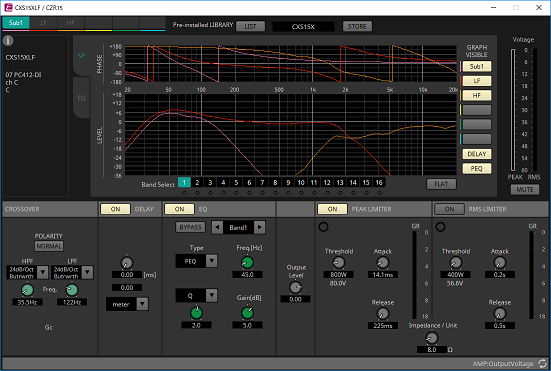"Project" sheet
7. "Project" sheet
When you open the "Project" sheet, the "Devices"/"Network" area, "Project" sheet, "Properties" area, and "Bird’s Eye view" appear.
"Bird’s Eye view" shows the entirety of the "Project" sheet.
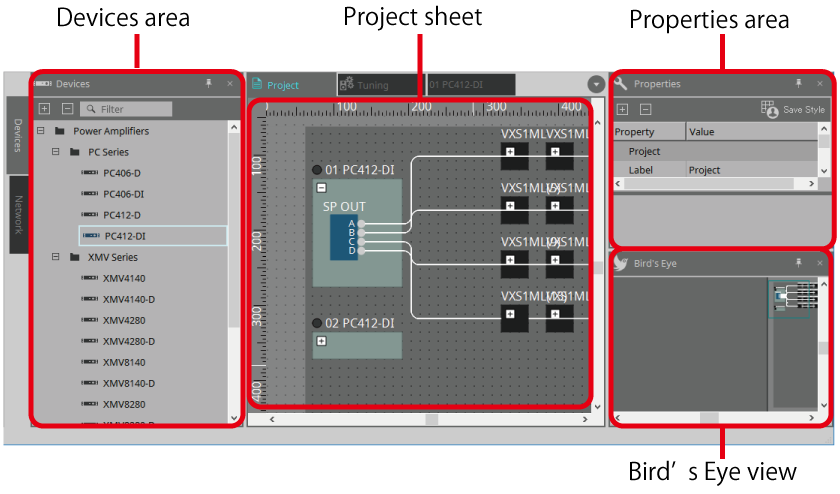
7.1. "Project" sheet
You can place devices in this sheet. The devices placed here are registered in the project.
Basic settings for a registered device are made in the "Properties" area.
7.2. "Devices" area
To place a device in the "Project" sheet as a virtual device, drag and drop the device from this area.
7.3. "Network" area
The devices that are on the same network as the computer are detected and shown here.
A device shown here can be registered in the project by dragging and dropping it into the "Project" sheet.
When you click the [Unit ID] button, the "Change Unit ID" dialog box appears.
7.3.1. "Change Unit ID" dialog box
In this dialog box you can change the UNIT ID of a PC-series device. When you change the UNIT ID, that device will restart, so it will temporarily disappear from the "Network" area.
You can’t change the UNIT ID of a device that is in the online state.
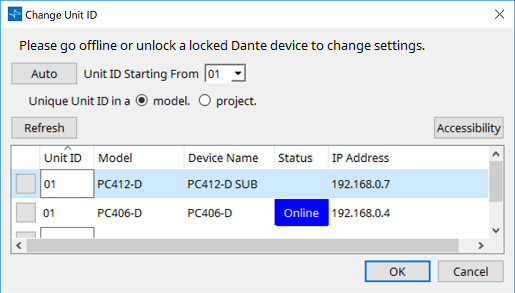
-
[Auto] button
Automatically assigns a UNIT ID to each device, starting with the number selected in the [Unit ID Starting From] list box. -
[Unique Unit ID in a model/project] option buttons
Specify whether the UNIT ID assignments that are made when you press the [Auto] button are unique for each model or unique for each project. -
[Refresh] button
Updates the device list located below the button. -
[Accessibility] button
Opens a supplementary "Unit ID" window that lets you change the UNIT ID of the currently selected device. The "Unit ID" window also opens when you right-click somewhere other than the Identify button or the [Unit ID] text box in the device list below.

-
Device list
The devices that are on the same network as the computer are detected and shown here.-
Identify button
When you press this button located at the left of the UNIT ID, the indicators of the corresponding device will flash for several seconds. -
[Unit ID] text box
Specifies the UNIT ID of the corresponding device. -
[Model]/[Device Name]/[Status]/[IP Address]
Show information for the device. You can click to sort the list.
-
7.4. "Properties" area
Here you can view and edit information about the sheet or object.
When you click the [Save Style] button, the information shown in the "Properties" area is saved on the computer as default values, and applied to other newly created projects.
For details on items related to the settings of a device, or on items that appear in the dialog box when you click, refer to the section on power amplifiers.
7.5. Placing devices
Here we explain how to place devices on the "Project" sheet.
|
-
Drag and drop a device from the "Devices" area into the "Project" sheet.
You can select the number of devices and the UNIT ID. The UNIT ID can be changed in the "Properties" area. -
Connect the computer to the network of devices, and then drag and drop a device from the "Network" area into the "Project" sheet.
If a device that you understand to be connected is not shown in the "Network" area, check that the device actually is connected to the network, and that it is powered-on.
Speakers are not shown in the "Network" area.
7.6. Selecting multiple objects
Here we explain how to select multiple objects placed in the "Project" sheet.
-
Use the mouse cursor to completely enclose objects
By dragging the mouse cursor, you can select the objects that are completely enclosed in the rectangular area on the sheet.
To select objects inside a device, start dragging inside that device. Only the objects inside that device are subject to selection.
| If the selection encloses a Device Group, and the point at which you start dragging is on the sheet, then the objects on the sheet are selected. If the point at which you start dragging is on a Device Group, then objects inside that Device Group are selected. |

-
Hold down < Ctrl > and use the mouse cursor to completely or partially enclose objects
By dragging the mouse cursor while you hold down < Ctrl >, you can select the objects that are completely or partially enclosed in the rectangular area on the sheet.
To select objects inside a device, start dragging inside that device. Only the objects inside that device are subject to selection.
| If the selection encloses a Device Group, and the point at which you start dragging is on the sheet, then the objects on the sheet are selected. If the point at which you start dragging is on a Device Group, then objects inside that Device Group are selected. |

-
Hold down < Ctrl > and click objects
To select multiple objects, hold down < Ctrl > and click each target that you want to select.
If you hold down < Ctrl > and click an object that is already selected, the selection is cleared.
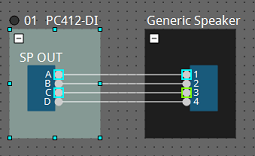
7.7. Connecting ports
Here we explain how to make connections between ports of devices by creating a wire between the ports.
-
Make one connection at a time
Drag one output port to the input port of the destination device.
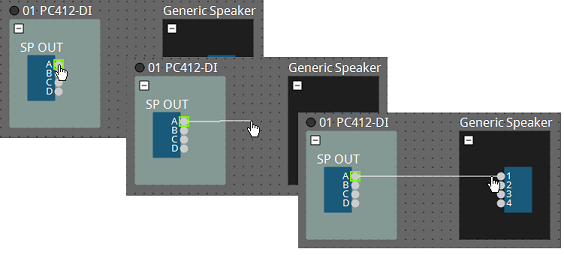
-
Make multiple connections at a time
Select multiple output ports, and drag one of these ports to an input port of the destination device.

7.8. Duplicating devices
Here we explain how to duplicate devices together with their parameters.
-
Right-click an object and choose [Duplicate]
A duplicate, overlapping object is created. If multiple objects with their wires are selected when you choose [Duplicate], the objects are duplicated together with their wires.
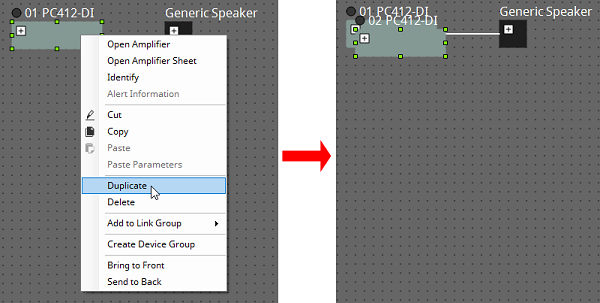
-
Drag and drop an object while holding down < Ctrl >
A duplicate is created where you drop the object.

-
Drag and drop objects with their wires while holding down < Ctrl >
Duplicates of the components together with their wires are created where you drop the component.

7.9. "Group" Editor
The devices in a device group can be powered on/off or muted in a single step.
When you double-click a device group or right-click and choose [Open Group Editor] from the context menu, the "Group Editor" opens.
This is available only when online.

-
"ALL STANDBY"
Switches the power of the devices in the device group to standby or on. -
"ALL MUTE"
Enables/disables the mute setting of the devices in the device group.
7.10. Speaker Editor / Multiple Speaker Editor
When a speaker is connected to a PC-series device via a wire, the parameters of the PC-series device’s speaker processor are shown for each individual speaker.
When you double-click a speaker or right-click and choose [Open Speaker Editor] from the context menu, the Speaker Editor opens.
When multiple speakers are selected, you can right-click and choose [Open Multiple Speaker Editor] from the context menu to open the Multiple Speaker Editor.
This is convenient in the following situations.
-
When speakers are connected to multiple PC-series devices, and you want to view each of these speaker processors in a single step.
-
When you want to view the superimposed response curves of the Main and Sub speakers. (Multiple Speaker Editor)
For details on the parameters, refer to "Speaker Processor" component editor .
